#armenian sudanese population
Text
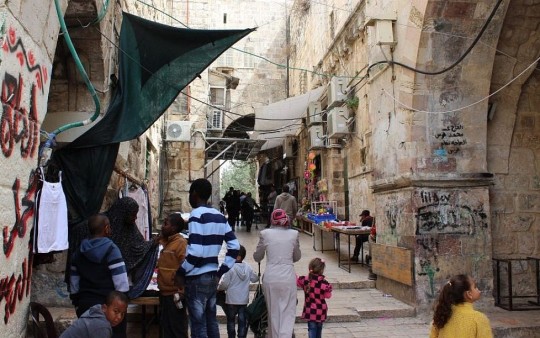
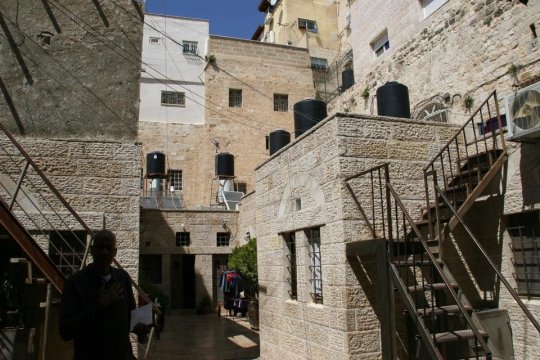
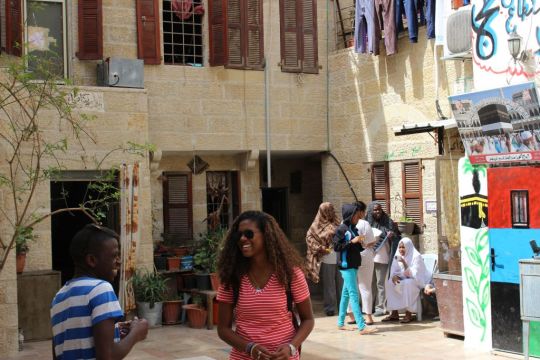
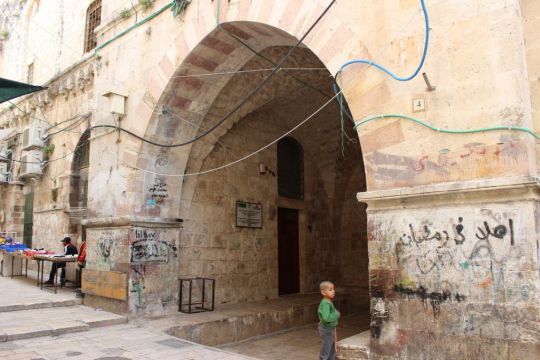
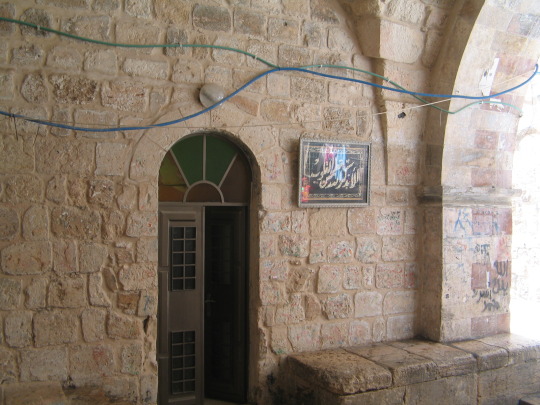
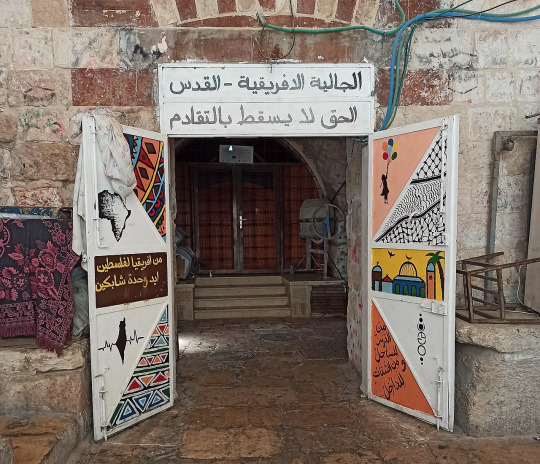
pictures from the old city of jerusalem's "african quarter", which comprises of ribat al-mansuri and ribat al-basiri. mamluks built the compounds in the late 13th century to house muslim pilgrims and the poor. ottomans used them as prisons, and the british closed the prisons when they occupied jerusalem in 1917. the ribats then came under the ownership of the islamic waqf, and were leased to the local afro-palestinian community.
afro-palestinians have an array of origins. like some other diaspora communities in palestine, some came through pilgrimage - al-aqsa was on their hajj path, and while many would visit to pray there, some decided to settle in jerusalem. there are also some who came to palestine enslaved or conscripted, most recently to ottomans. some came during the time of the british mandate, many as conscripted laborers to the british. afro-palestinians who can trace their ancestry do so to nigeria, chad, senegal, or sudan.
jerusalemite afro-palestinians were employed to guard al-aqsa throughout the ottoman period. during the 1948 palestine war, some joined the arab liberation army and fought with fellow palestinians to defend al-aqsa and their presence in jerusalem. the position of guards has been taken by occupation soldiers since the 1967 war, after which a quarter of the afro-palestinian population became refugees in surrounding countries.
jerusalem's afro-palestinian community still live in the compounds today, which also house the local african community society. (the door in the last picture is theirs.) afro-palestinians as a whole face the same legal, social, and economic restrictions and maltreatment as other palestinians, compounded with the same anti-black racism from israeli government and police which ethiopian jews and eritrean asylum seekers face, which result in a form of "passport racism" unique to them.
#palestine#architecture#muslim#diasporic palestine#my posts#see image description on 6th pic for translation#also worth mentioning that all four of the 'origin' countries are majority-muslim or had large muslim communities in case u didnt know#(though i wouldn’t doubt it if some nigerian or sudanese-palestinians came in the mandate era)#i feel like most of this blog's main demographic may know about sudan but maybe not the other three#there’s other black populations in pretty much every other me country who came for similar reasons#though pilgrimage is something really unique to palestine#and i’d guess also maybe modern day saudi arabia#though there’s large armenian communities in lebanon and syria who were established bc of pilgrimage to palestine
475 notes
·
View notes
Text
The fact I’ve deadass seen someone say “Zionism is land back”… like besides a complete and total misunderstanding of what “indigenous” means in a modern political context the argument kind of falls apart if, for two seconds, you think about which side is supported by Indigenous Americans + Armenian people + Sudanese people + Congolese people etc and which side is supported by imperial powers like the USA and UK. If several groups of oppressed people are all showing their solidarity with Palestine, while states with long histories of brutal colonialism that regularly commit atrocities are supporting Israel, who do you think is the victim? Do you seriously think the side that actual indigenous activists *oppose* are the ~Real Indigenous~ people? Do you think people quite literally stealing houses & homes are “indigenous”? Do you think the US government, notorious for their mistreatment of indigenous populations, would side with the ~Real Indigenous~ people in an international conflict? Do you actually know what “indigenous” means could you actually define it in a modern political context and not cite like dictionary dot com as your only source do you know anything about decolonization. Israel has always been a colonial project, not “land back”
#Notably it’s only people who very very obviously know Jack Shit about land back & never listen to indigenous activists who say that shit#Because anyone else would have too much basic common sense.
0 notes
Text
I don't like the song amazing grace or what it stands for in the context of african post-slavery cultural genocide juxtaposed with white western european colonialist christian values.
so like, african cultural heritage is what it is, right? it's heavily important to world history and obviously every ethnic group is valuable in its own way because humans are worthy of respect and stuff. that's a given.
so when slavery happened and the africans were stripped of their individuality and heritage and nationality and basically underwent mass cultural AND ethnic genocide. that fuckin sucks because a) slavery is bad and b) genocide is bad and c) being denied your birthplace and stuff is bad. I can't simplify this any further.
so what happened in history? many african slaves found solace in christianity and the bible because it gave them hope and distracted them from the hellish existence that is slavery. that continued throughout the generations past abolition through the civil rights movements and continues today. black christianity derived from slavery is the root of 90% of music we listen to today; it's heavily influential on today's cultural climate and the contributions of the black american cannot be denied. even now a significant portion of christianity in america is heavily attributed to african descended black people.
there's just one thing about that that really bothers me:
american christianity is heavily rooted in white western imperial european colonialism. oh no.
there are so many black christians with no idea where their ancestors lived or what cultural heritage they're derive from. they were robbed of their history. while white europeans have the privilege of being able to know so many things about their great great great etc grandparents. in this context white americans count because we're here because of european invasions. we can trace our lineage back for generations. so many of us know that we're 17% Italian or 17% Irish or 17% French or 17% Swedish n shit like that. most black americans don't know if their parents are part Kenyan or Ethiopian or Congo or Sudanese or whatever. that's why they refer themselves as black because all they have to go by is the color of their skin, because the people who owned their great great grandma sure as fuck didn't write down what country their slave came from because they didn't care because they treated black people as property because life was a godawful hellhole back then for most people. they don't get to know what country they're from like most white people do.
so when they turn to not only christianity but a specific form of christianity, protestant sects, it's like another step of cultural genocide. by embracing a religion created by white people to control minorities and women, regardless of how much they change it to make it their own, it's still rooted in the same bloody soil. they turn further from their own roots in the many different varying mythologies i can't talk much about because society values the mythology of nonblack people so much more: Greek, Norse, Egyptian (well the Egyptians were black but society loves to ignore that fact and whitewash them), Shinto, etc.
now I'm not saying that all black christians are directly responsible for participating in their own cultural genocide. that's an asinine claim. there are plenty of black jews, black muslims, black atheists, black pagans, black greek/norse/egyptian/shinto/etc followers, and surely there are lots of modern black euroamericans who still keep in touch with their cultural roots. the religious decisions of every individual are their own through mental autonomy and the ownership of their own consciousnesses.
what I AM saying is that christianity is a lot more insidious and evil than it appears to be on the surface. it was used as a defense of owning slaves- "africans deserve to be slaves because they're sons of ham, descended from the son of noah god cursed because the bible". it was used to protest abolition. it was used to uphold segregation. it was used to protest black votes. it's used to defend cops who kill unarmed men. it is, always has been, and always will be used as a weapon by white people against black existence. and the fact that throughout all of that, the exact same failed system of belief [speaking from a historical perspective of course because white christianity in the 16th century and beyond is massively poisoned by the bloated and corrupt papacy further than what it already was during the medieval and dark ages] was embraced so readily by the people that it oppressed...
it's just really concerning to me.
& it's not even a black thing. the prevalence of catholicism in mexican and other latin american culture is the same way. east asia is ripe with larger cultural superpowers eating the smaller ones and pretending they don't exist, just like china with taiwan, except not in a religious way. the holy roman empire did the same thing. and don't even get me started on the armenian genocide committed by the ottoman empire. and the fucking holocaust: hitler was christian. people say he wasn't a good christian since a good christian wouldn't try to kill the jews, the romani, the black, but are you sure about that? looking at all of history are you ABSOLUTELY SURE that white western imperialist european christian colonialism wouldn't try to murder everyone who didn't conform? naziism is on the rise again and it's masquerading as christianity. the president is a nazi and a christian.
no, this has nothing to do specifically with african and black populations and everything to do with christianity. except through "amazing grace" and its prevalence in that community.
also the man who wrote it manned slave ships. he was conscripted into it, became a slave in sierra leone for a while, and eventually became an abolitionist, but still :/ imagine if rommel the kraut of africa wrote a song and a hundred years later it became a celebrated jewish hymn. that would be incredibly fucked up and wrong.
but whatever, maybe I'm looking too far into this, maybe there's no illuminati boogeyman trying to erase black and jewish culture from world history, maybe it's all just a big goddamn coincidence that the victims of colonialism embraced the religion that the imperials used. ¯\_(ツ)_/¯ maybe just maybe it's a fucking fluke.
anyway black people can like the song if they want. they can be christians.
I just hate the song and won't be a christian. you do you and I'll do me and we'll all get along happily.
1 note
·
View note
Text
Timeline of the Lebanese Civil War in Beirut
Based on Zeina Masri, Off the Wall (London: IB Tauris, 2009) and Joseph G. Chami, Le memorial de la guerre (Beirut: NP, c. 2003)
13 April 1975 The date usually remembered as the start of the civil war. Gunmen from the Kataeb Party kill around 30 Palestinians travelling on a bus through the Christian neighborhood of Ain Roumaneh. Violence quickly escalates around Beirut, especially in Dekwane and Tel el-Zaatar.
April-June 1975 Fighting throughout Beirut and Lebanon. 2314 dead, 16442 injured.
30 May 1976 Targeted killings of Christians living in West Beirut.
June 1975 The front line between Ain Roumaneh and Chiyah stabilizes and becomes an unchanging boundary between East & West Beirut practically until the end of the war.
30 June 1975 First of a long series of unsuccessful cease-fires after prominent Sunni politician Rashid Karami forms a National Salvation Government.
18 September 1975 Clashes occur in Downtown for the first time.
8 October 1975 Ashrafieh (East Beirut) is targeted by artillery and Beirut airport is closed.
26 October 1975 Palestinian and leftist fighters surround Qantari.
6 December 1975 Around 200 people are murdered at checkpoints throughout Beirut because their identity cards identify them as Muslims. The event is known as Black Saturday.
8 December 1975 The Battle of the Hotels begins with fighting over the area containing the Holiday Inn, Phoenicia, and St. George Hotels, as well as the unfinished Murr Tower. The battle lasts until 22 March 1976, when right-wing Christian militias withdraw from the hotels and thus lose all of the territory they held in West Beirut.
5 January 1976 Siege of Tel al-Zaatar Palestinian refugee camp in East Beirut begins.
13 January 1976 Siege of Dbayye refugee camp, also in East Beirut, begins.
18 January 1976 Massacre in the Karantina neighborhood of East Beirut.
22 January 1976 Another ceasefire, this time the result of Syrian pressure.
13 March 1976 More fighting in Downtown.
8 May 1976 Elias Sarkis elected president of Lebanon.
16 May 1976 Heavy shelling in Beirut. 400 dead, 1000 wounded in 48 hours.
29 May 1976 GRAD rockets used in Beirut for the first time. 270 dead.
1 June 1976 Syrian forces enter Lebanon in support of the Christian/right-wing elements based in East Beirut.
16 June 1976 US Ambassador Francis Meloy is abducted and murdered while crossing the Green Line in central Beirut.
22 June-18 August 1976 Attack on Tel al-Zaatar Palestinian refugee camp, accompanied by massacres of its population.
2 August 1976 The neighborhood of Nab’ occupied by Palestinian/leftist forces.
20 August 1976 The Lebanese Forces created in an attempt to unite all Christian militias in Lebanon.
17 October 1976 Arab summit in Riad, Saudi Arabia, creates the Arab Deterrent Force as a peacekeeping force in Lebanon composed of troops from several Arab countries, but dominated by Syria.
15 November 1976 The Arab Deterrent Force enters Beirut. This marks the end of the first phase of the war, known as the Two-Years’ War.
7 February 1978 Clashes between Syrian and Lebanese Troops in Fayadiyye followed by shelling of Ashrafieh and Ain Roumaneh.
14 March 1978 Israel invades the south of Lebanon
9 April 1978 The Arab Deterrent Force shells the mostly-Christian Achrafieh and Badaro neighborhoods.
1 July 1978 The next phase of the war, known as the Hundred-Days’ War, begins. The Syrian army switches sides and routinely shells East Beirut, home of its erstwhile rightist allies.
13 August 1978 A bomb attack on building in Fakhani neighborhood (West Beirut), used as the headquarters of a Palestinian organization results in 150 deaths.
7 October 1978 Another cease-fire.
13 January 1979 Clashes between the Syrian Army and its erstwhile allies from the Lebanese Forces in Beirut. 16 dead, 75 wounded.
March 1979 Saudi, Emirati, and Sudanese Forces withdraw from the Arab Deterrent Force, but Syrian troops stay in Lebanon.
8 May 1979 The Kataeb party militia battles Armenian militias in the Bourj Hammoud neighborhood of East Beirut.
12 May-12 June 1979 The Kataeb fight Lebanese National Party forces in Furn el-Chebbak. Both parties are Christian.
10 September 1979 More fighting between the Kataib and the Armenians. 31 dead.
13 March 1980 Shia militia Amal battles Palestinian Fatah in the Ouzai neighborhood of East Beirut.
7 July 1980 Kataeb launches a large-scale attack on the Lebanese National Party and largely eliminates it. Around 200 dead. Both parties are Christian.
26 October 1980 Kataeb forces battle remnants of the Lebanese National Party in Ain Rummaneh
5 November 1980 Mourabitoun forces battle Syrian Social Nationalist Party forces in West Beirut and elsewhere in Lebanon.
17 July 1981 Israeli air raid on Fakhani neighborhood results in 141 deaths and 730 injuries.
8 January 1982 Battle between Amal and communists in West Beirut
4 June 1982 Israeli aerial bombardment of Beirut
6 June 1982 Israeli forces invade Lebanon
3 July 1982 Israeli forces blockade and bomb West Beirut
21 August 1982 Palestinian fighters and Syrian troops begin to leave West Beirut. The Multinational Force consisting of troops from the US, France, and Italy begins to arrive in Lebanon.
23 August 1982 Bashir Gemayel is elected president
30 August 1982 Palestinian leader Yasir Arafat leaves Beirut and the Lebanese Army deploys to the city center.
13 September 1982 Bashir Gemayel is assassinated in a bomb explosion.
14 September 1982 Israeli forces tighten siege of West Beirut
15-18 September 1982 Widespread massacres in Sabra and Chatila Palestinian camps. The attacks are carried out militias allied with Israel in an area of the city under Israeli control.
21 September 1982 Amine Gemayel, brother of the assassinated Bashir Gemayel, is elected president of Lebanon.
29 September 1982 Israeli forces leave Beirut.
15 July 1983 Clashes between the Lebanese Army and Amal in the Wadi Abu Jamil neighborhood.
21 July 1983 After President Gemayel criticizes Syria, East Beirut is shelled, resulting in 18 deaths and 66 injuries.
10 August 1983 The Druze Progressive Socialist Party shells Beirut, 12 dead, 38 wounded.
28 August 1983 The Lebanese Army regains control of West Beirut after 4 days of heavy fighting against Amal.
23 October 1983 Massive bomb attacks against US and French facilities housing troops from the Multinational Force result in 241 dead US soldiers and 58 dead French soldiers.
20 December 1983 Arafat and 4000 Palestinian fighters leave Lebanon via Tripoli Port
6 February 1984 Amal, the Progressive Socialist Party, and the Syrian Social Nationalist Party together take control of West Beirut from the Lebanese Army.
17 February 1984 US president Reagan orders US forces to leave Beirut
4 July 1984 Connections between East and West Beirut temporarily re-opened. The airport also resumes operations.
12 March 1985 Uprising by the Lebanese Forces against the Kataeb party under Amine Gemayel. Kataeb break away from unified Lebanese Forces command. All parties in this conflict are right-wing and Christian.
16 April 1985 Amal and the Progressive Socialist Party eliminate the Mourabitoun militia in West Beirut.
30 April 1984 Heavy random shelling in Beirut.
20 May 1985 The so-called War of the Camps begins with Amal attacking Palestinian refugee camps. It lasts until 17 June, kills 800 and wounds 2500.
1 July 1985 Clashes begin between Amal and the Progressive Socialist Party, Amal’s erstwhile allies, in West Beirut.
20 November 1985 More clashes between Amal and the Progressive Socialist Party result in 65 deaths. The clashes begin when PSP members try to raise Lebanese flags in West Beirut.
28 December 1985 The so-called Tri-Partite agreement is signed in Damascus between the Lebanese Forces, the Progressive Socialist Party, and Amal. It is supposed to start a peace process to end the war.
13 January 1986 Clashes within the Lebanese Forces. By 15 January opponents of the Tri-Partite Agreement have the upper hand and the agreement is effectively dead. Syria, a sponsor of the agreement, responds by shelling East Beirut. More than 200 die.
11 August 1986 More clashes within the Lebanese Forces.
27 September 1986 Supporters of the Tri-Partite Agreement among the Christian militias try once again to enter East Beirut. They are repelled by the Lebanese Forces and the Army.
15 February 1987 More fighting between Amal and the Progressive Socialsit Party in West Beirut.
22 February 1987 Syrian troops re-enter West Beirut.
6 May 1988 Amal fights Hizballah in Beirut’s southern suburbs and 157 die. Both groups are Shia Muslim. Fighting ends after Syria and Iran impose a ceasefire.
24 May 1988 Hizballah captures the southern suburb of Ghobeiri from Amal, 6 die, 113 wounded.
27 May 1988 Syrian troops surround Beirut’s southern suburbs.
22 September 1988 Commander of the Army Michel Aoun is named prime minister just before the end of President Gemayel’s term in office. This is a major departure from tradition, because all previous prime ministers have been Sunni Muslims, but Aoun is Christian. When President Gemayel’s term of office runs out, Aoun becomes acting president.
14 February 1989 Clashes between the Lebanese Army and the Lebanese Forces militia in Beirut.
6 March 1989 The army under Aoun tries to close illegal ports run by Christian militias. The militias respond by blocking access to Beirut Port.
13 March 1989 Fighting in Downtown and more indiscriminate shelling.
14 March 1989 Aoun declares a War of Liberation against Syria.
21 March 1989 Crossings between East and West Beirut closed.
22 September 1989 A ceasefire begins and crossings between East and West Beirut re-open.
22 October 1989 Fifty-eight of the deputies of Lebanon’s last elected parliament approve the Taef Accord, a document that would eventually become the basis for a peace agreement ending the war.
5 November 1989 René Mouwwad is elected president by remaining MPs, but Aoun refuses to recognize the election and continues to occupy the presidential palace.
17 November 1989 Attacks on the houses of Members of Parliament in East Beirut.
22 November 1989 Mouwwad is assassinated in an explosion in West Beirut.
24 November 1989 Parliament elects Elias Hrawi president, but Aoun still refuses to recognize this.
31 January 1990 Fighting between the Lebanese Army under Aoun and the Lebanese Forces.
20 March 1990 Parliament meets in its building in Downtown for the first time in years.
29 July 1990 The areas under Aoun’s control are blockaded.
13 October 1990 Syrian and Lebanese troops attack the Presidential Palace, and Aoun leaves Lebanon.
11-12 November 1990 Amal and the Progressive Socialist Party remove their weaponry from Beirut.
3 December 1990 Lebanese Forces remove heavy their heavy weaponry from Beirut.
Fighters for Peace is not responsible for the above information
مقتبس عن زينة مصري ، Off the Wall (لندن: 2009IB Tauris ) وجوزيف ج.شامي، Le memorial de la guerre (Beirut: NP, c. 2003)
13 نيسان 1975: التاريخ الذي عادة ما يتم تذكره على أنه بداية الحرب الأهلية. مسلحون من حزب الكتائب قتلوا نحو 30 فلسطينيا كانوا يستقلون حافلة عبر حي عين الرمانة المسيحي. تصاعد العنف بسرعة في أنحاء بيروت، لا سيما في الدكوانة وتل الزعتر.
نيسان - حزيران 1975: القتال في جميع أنحاء بيروت ولبنان. 2314 قتيل و16442 جريح.
30 أيار 1976: عمليات قتل مستهدفة للمسيحيين الذين يعيشون في بيروت الغربية.
حزيران 1975: خط المواجهة بين عين رمانة والشياح يستقر ويصبح حدودًا ثابتة بين شرق وغرب بيروت عمليًا حتى نهاية الحرب.
30 حزيران 1975: أول سلسلة طويلة من وقف إطلاق النار الفاشل بعد أن شكل السياسي السني البارز رشيد كرامي حكومة الإنقاذ الوطني.
18 أيلول 1975: وقعت اشتباكات في وسط المدينة لأول مرة.
8 تشرين الأول (أكتوبر) 1975: إستهداف الأشرفية (شرق بيروت) بالمدفعية وإغلاق مطار بيروت.
26 تشرين الأول 1975 مقاتلون يساريون وفلسطينيون يحاصرون القنطاري.
6 كانون الأول 1975 قتل حوالي 200 شخص عند نقاط التفتيش في جميع أنحاء بيروت لأن بطاقات هويتهم تحددهم على أنهم مسلمون. يُعرف الحدث باسم السبت الأسود.
8 كانون الأول 1975 بدأت معركة الفنادق بالقتال على المنطقة التي تحتوي على فنادق هوليداي إن وفينيسيا وسانت جورج، بالإضافة إلى برج المر غير المكتمل. استمرت المعركة حتى 22 آذار 1976، عندما انسحبت الفرق المسيحية اليمينية من الفنادق، وبالتالي خسرت كل الأراضي التي كانت تحت سيطرتها في بيروت الغربية.
5 كانون الثاني 1976: بدء حصار مخيم تل الزعتر للاجئين الفلسطينيين في شرق بيروت.
13 كانون الثاني 1976: بدأ حصار مخيم ضبية للاجئين في شرق بيروت.
18 كانون الثاني 1976: مجزرة في حي الكرنتينا شرق بيروت.
22 كانون الثاني 1976: وقف آخر لإطلاق النار، وهذه المرة نتيجة الضغط السوري.
13 آذار 1976: المزيد من القتال في وسط المدينة.
8 أيار 1976: انتخب الياس سركيس رئيسا للبنان.
16 أيار 1976: قصف عنيف على بيروت. 400 قتيل و1000 جريح في 48 ساعة.
29 أيار 1976: استخدمت صواريخ GRAD في بيروت لأول مرة. 270 قتيلاً.
1 حزيران 1976: تدخل القوات السورية لبنان دعما للعناصر المسيحية / اليمينية المتمركزة في شرق بيروت.
16 حزيران / يونيو 1976: اختُطف السفير الأميركي فرانسيس ميلوي وقتل أثناء عبوره للخط الأخضر في وسط بيروت.
22 حزيران - 18 آب 1976: هجوم على مخيم تل الزعتر للاجئين الفلسطينيين ومذابح لسكانه. 2 آب 1976، حي النبعة الذي احتلته القوات الفلسطينية / اليسارية.
20 آب / أغسطس 1976، تشكلت القوات اللبنانية في محاولة لتوحيد كل الجماعات المسيحية في لبنان.
17 تشرين الأول 1976، القمة العربية في الرياض، المملكة العربية السعودية، شكلت قوة الردع العربية كقوة حفظ سلام في لبنان تتألف من قوات من عدة دول عربية، ولكن تهيمن عليها سوريا.
15 تشرين الثاني 1976: تدخل قوة الردع العربية بيروت. يمثل هذا نهاية المرحلة الأولى من الحرب، المعروفة باسم حرب السنتين.
7 شباط 1978 اشتباكات بين القوات السورية واللبنانية في الفياضية تلاها قصف على الاشرفية وعين الرومانة.
14 آذار 1978 تغزو إسرائيل جنوب لبنان
9 نيسان 1978 قصفت قوة الردع العربية أحياء الأشرفية وبدارو ذات الأغلبية المسيحية.
1 يوليو 1978 بدأت المرحلة التالية من الحرب المعروفة بحرب المائة يوم. يغير الجيش السوري ولائه ويقصف بشكل روتيني شرق بيروت، موطن حلفائه اليمينيين السابقين.
13 آب / أغسطس 1978: انفجار قنبلة على مبنى في حي الفاخاني (بيروت الغربية) كان يستخدم كمقر لمنظمة فلسطينية يسفر عن 150 قتيلاً.
7 تشرين الأول 1978 وقف إطلاق نار آخر.
13 كانون الثاني 1979 اشتباكات بين الجيش السوري وحلفائه السابقين من القوات اللبنانية في بيروت. 16 قتيلا و75 جريح
آذار 1979 انسحاب القوات السعودية والإماراتية والسودانية من قوة الردع العربية لكن القوات السورية تبقى في لبنان.
8 أيار 1979 قوات حزب الكتائب تقاتل المجموعات الأرمينية في حي برج حمود شرق بيروت.
12 أيار - 12 حزيران 1979 قتال الكتائب قوى الحزب الوطني اللبناني في فرن الشباك.
10 أيلول 1979 مزيد من القتال بين الكتائب والأرمن. 31 قتيلا.
13 آذار 1980 حركة أمل الشيعية تقاتل حركة فتح الفلسطينية في حي الأوزاعي شرق بيروت.
7 تموز 1980 ، شنت الكتائب هجوماً واسعاً على الحزب الوطني اللبناني وقضت عليه إلى حد كبير. حوالي 200 قتيل. كلا الحزبين مسيحيون.
26 تشرين الأول 1980 تقاتل قوات الكتائب فلول الحزب الوطني اللبناني في عين الرمانة
5 تشرين الثاني 1980 قوات المرابطون تقاتل قوى الحزب السوري القومي الاجتماعي في بيروت الغربية وأماكن أخرى في لبنان.
17 يوليو / تموز 1981 غارة جوية إسرائيلية على حي الفخاني أسفرت عن مقتل 141 شخصًا وإصابة 730 آخرين.
8 يناير 1982 معركة بين أمل والشيوعيين في بيروت الغربية
4 حزيران 1982 قصف جوي إسرائيلي على بيروت
6 حزيران 1982 القوات الإسرائيلية تغزو لبنان
3 تموز 1982 القوات الإسرائيلية تحاصر بيروت الغربية وتقصفها
21 آب 1982 المقاتلون الفلسطينيون والقوات السورية يبدأون مغادرة بيروت الغربية. بدأت القوة متعددة الجنسيات المؤلفة من قوات من الولايات المتحدة وفرنسا وإيطاليا في الوصول إلى لبنان.
23 آب 1982 انتخب بشير الجميل رئيسا للبلاد
30 آب 1982 الزعيم الفلسطيني ياسر عرفات يغادر بيروت وينتشر الجيش اللبناني في وسط المدينة.
13 أيلول 1982 اغتيل بشير الجميل بانفجار عبوة ناسفة.
14 أيلول 1982 القوات الإسرائيلية تشدد حصارها على بيروت الغربية
15-18 أيلول 1982 مذابح واسعة النطاق في مخيمي صبرا وشاتيلا الفلسطينيين.
21 أيلول / سبتمبر 1982 انتُخب أمين الجميل، شقيق المغتال بشير الجميل، رئيساً للبنان.
29 أيلول 1982 القوات الإسرائيلية تغادر بيروت.
15 تموز 1983 اشتباكات بين الجيش اللبناني وحركة أمل في حي وادي أبو جميل.
21 تموز 1983 بعد انتقاد الرئيس الجميل لسوريا، قصفت بيروت الشرقية، مما أسفر عن 18 قتيلاً و 66 جريحاً.
10 آب 1983 قذائف الحزب الاشتراكي التقدمي الدرزي في بيروت، 12 قتيلا و38 جريحا.
28 آب 1983 الجيش اللبناني يستعيد السيطرة على بيروت الغربية بعد 4 أيام من القتال العنيف ضد أمل.
23 تشرين الأول 1983 - أدت الهجمات الضخمة بالقنابل على منشآت أمريكية وفرنسية تضم قوات من القوة المتعددة الجنسيات إلى مقتل 241 جنديًا أمريكيًا و58 جنديًا فرنسيًا.
20 كانون الأول 1983، غادر عرفات و4000 مقاتل فلسطيني لبنان عبر ميناء طرابلس
6 شباط 1984 أمل والحزب التقدمي الاشتراكي والحزب السوري القومي الإجتماعي يسيطرون معًا على بيروت الغربية من الجيش اللبناني.
17 فبراير 1984 الرئيس الأمريكي ريغان يأمر القوات الأمريكية بمغادرة بيروت
4 تموز 1984 أعيد فتح العلاقات بين بيروت الشرقية والغربية مؤقتًا. كما يستأنف المطار عملياته.
12 آذار 1985 انتفاضة القوات اللبنانية على حزب الكتائب بقيادة أمين الجميل. الكتائب تنفصل عن قيادة القوات اللبنانية الموحدة. جميع أطراف هذا الصراع يمينية ومسيحية.
16 نيسان 1985 أمل والحزب التقدمي الاشتراكي يقضيان على مليشيا المرابطون في بيروت الغربية.
30 نيسان 1984 قصف عشوائي عنيف على بيروت.
20 أيار 1985 بدأت ما يسمى بحرب المخيمات بمهاجمة أمل لمخيمات اللاجئين الفلسطينيين. وإستمرت حتى 17 حزيران وأودت بحياة 800 شخص وإصابة 2500 بجروح.
1 تموز / يوليو 1985 بدأت الاشتباكات بين أمل والحزب التقدمي الاشتراكي، حلفاء أمل السابقين، في بيروت الغربية.
20 تشرين الثاني1985 المزيد من الإشتباكات بين أمل والحزب التقدمي الاشتراكي أسفرت عن مقتل 65. بدأت الاشتباكات عندما حاول أعضاء الحزب التقدمي الاشتراكي رفع الأعلام اللبنانية في بيروت الغربية.
28 كانون الأول / ديسمبر 1985 تم توقيع ما يسمى بالاتفاقية الثلاثية في دمشق بين القوات اللبنانية والحزب التقدمي الاشتراكي وحركة أمل. من المفترض أن تبدأ عملية سلام لإنهاء الحرب.
جمعية محاربون من أجل السلام غير مسؤلة عن المعلومات الواردة أعلاه.
1 note
·
View note
Text
2020
November: A Month in Images
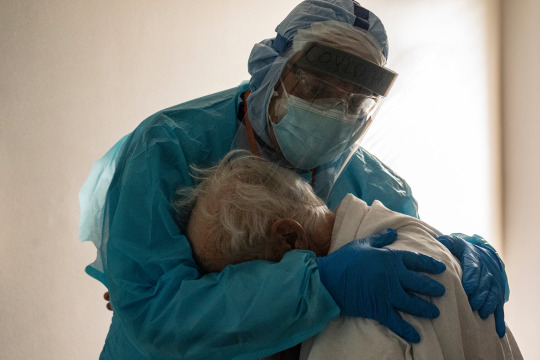
November saw massive surges in COVID-cases around the world - but none moreso than the United States. At a Houston hospital, Dr. Joseph Varon comforts a COVID-19 patient in the intensive care unit - the man was trying to get out of his bed because he wanted to be with his wife - Go Nakamura/Getty Images

A Biden supporter, armed with festive balloons and an impeccable manicure, arrives at a rally in Delaware - Amr Alfiky/The New York Times

Women pray at Sunday Mass in a church near the Sudanese refugee camp near Qadarif. As northern Ethiopia is beset with ethnic violence, thousands have fled their homes - Nariman El-Mofty/AP
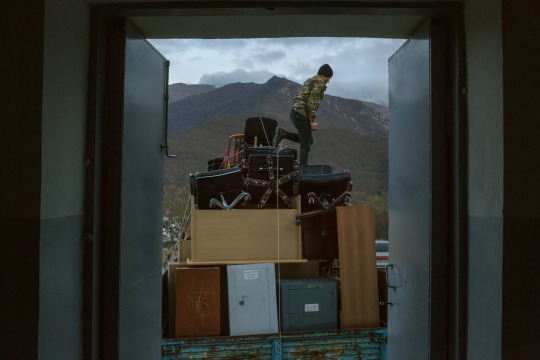
Armenians salvage anything useful from a police station before it falls into Azeri hands. A peace-treaty between Azerbaijan and Armenia settled a weeks-long war between the two over the disputed Artsakh region - Mauricio Lima/The New York Times
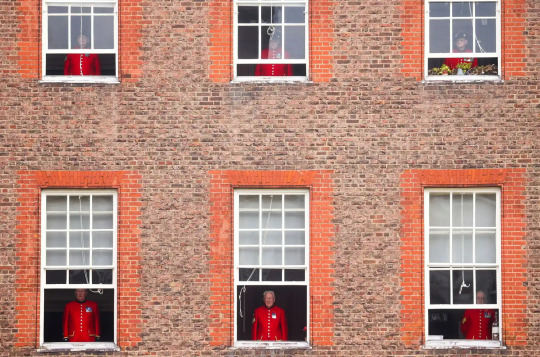
Elderly veterans take in a Remembrance Day ceremony from the widows of the Royal Hospital Chelsea. The building was in lock-down because of a coronavirus outbreak - Henry Nicholls/Reuters
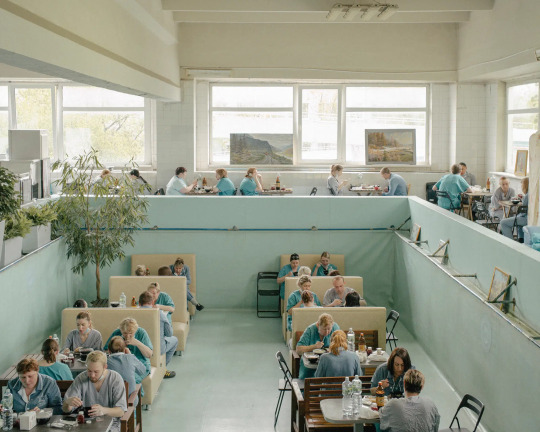
A Moscow hospital converted an pool into extra cafeteria seating for staff. COVID numbers rose steadily in Russia through the month of November - Nanna Heitmann/Magnum Photos

Protesters in Thailand attend an anti-coup rally, armed inflatable rubber ducks. They used the floaties as shields against the high-powered water cannons wielded by Bangkok police - Vichan Poti/Pacific Press
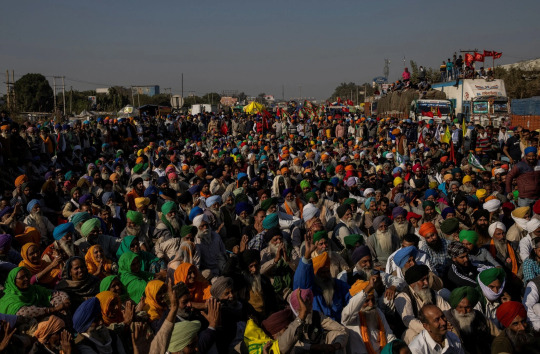
200,000-300,000 Sikh farmers barricaded the entrances to Delhi to protest a farm bill they say will imperil their livelihoods and their farms - Danish Siddiqui/Reuters

Hurricane Iota caused massive flooding across central America - in La Lima, Honduras, the Chamelecon River overflows its banks, completely submerging vehicles nearby - Jorge Cabrera/Reuters
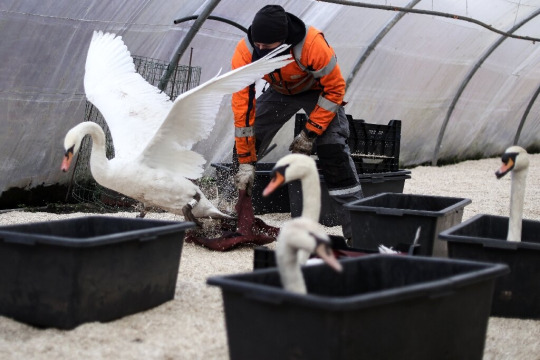
A Brugges municipal worker releases swans in a protected aviary amid concerns over an outbreak of bird flu - millions of animals were culled as cases were discovered throughout Europe and Asia. The disease is highly deadly to wild bird populations - and, on the rare case it makes the species jumps - humans as well - AFP

Republican protesters gather outside Philadelphia’s convention centre, where ballots are being processed. Trump’s campaign has falsely alleged that their election observers were barred from watching the tally - Ruth Fremson/The New York Times

In Ethiopia’s north fighting between the government and Tigray militias is driving an exodus of refugees into neighbouring Sudan - particularly after the government sieged and shelled the city of Mekelle, a Tigray capital home to 500,000 people - Nariman El-Mofty/Associated Press
1 note
·
View note
Text
Visit Egypt
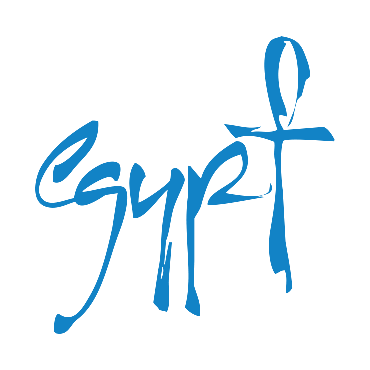
https://youtu.be/jCdoHRR4JB8
Egyptian Tourism Authority
About Egypt
Country
Despite ranking in the top 30 largest countries with its 1 million square kilometers of land, Egypt is a country that is notorious for its geographic ‘distribution.’ 99% of Egypt’s population utilizes only 5% of the total land area but nearly 100% of its aquatic resources as a result of the predominantly barren ecosystem. The lifeline of some 90 million human beings, the river Nile is the focal point of urban planning, an incredible 6,695 km gift of sustenance for Egypt and three other countries, making it the longest, and arguably most vital, river in the world.
The Nile enters Egypt a few kilometers north of a Sudanese town called Wadi Halfa through a narrow canyon that traverses sandstone and granite cliffs. The northward flowing direction of the river has thus earned Egypt’s southern border the name “Upper Egypt.” Within this stretch of the Nile is the world’s most intensive concentration of temples, tombs and palaces constructed over the span of 4,000 years. This includes the temples of Abydos, Dendara, Karnak, Esna, Edfu, Kom Ombo, Philae and Abu Simbel, each conceived for their respective deities, further to the tombs in the Theban Necropolis within the Valley of the Kings across the river from Luxor. Absorbing the river-scape from the comfort of a felucca (small sail boat) is the epitome of pleasure, relished by locals and non-locals alike. This is easily arranged in Aswan, and larger Nile cruise boats can provide an even more luxurious experience. As this river continues to flow upwards past major cities and temples, it begins to branch out into a flower-shaped formation known as the Nile delta, covering 240 km of the Mediterranean coastline. Home to 39 million people, this is Egypt’s most agriculturally rich land with some of the most beautiful, soul-rejuvenating nature Egypt has to offer.
Much like the Nile, the Red Sea coast, a once microcosm of the world that hosted sailors from far away lands, has also become a pivotal part of the country. Turquoise waves break against rocky capes and windswept beaches in the foreground of an endless mountain range, a much needed escape for the people of Cairo. The real lure here, especially for the non-locals, are the fabulous island reefs near the resort of Hurghada and the smaller settlements of Port Safaga, El-Quseir and Marsa Alam to the south. This entire region saw a rapid transformation in the past two decades, catalyzed by surges of annual tourists, with the most notable development being the future construction of Egypt’s new capital city near this coastline. These destinations pack a powerful punch when it comes to travel-seeking vacationers. Shark-diving, snorkeling, and kite-surfing are complemented by the revitalizing effects of 18-hole golf courses, private beaches, open-air cinemas, and unrivaled night life scenes.
A tribute to its elusive splendor, the Egyptian landscape is quite remarkable, especially considering it’s a country composed mostly of sand and dust .
People
A democratic republic of blended ethnicities, Egypt is divided into 26 governorates consisting of towns, cities and villages. Currently, Egypt is home to some 90 million Egyptians that are (almost) equally split between urban and rural-dwelling citizens, concentrated near the banks of the Nile in the major cities of Cairo, Luxor, Aswan and Port Said. A very provincial people, Egyptians have always had deep-rooted ties to their places of origin, so much so that even those who live abroad always return to the exact same town they had previously built a life in. It’s almost as if moving elsewhere is not an option. From this emerges the unparalleled warmth and intangible ‘closeness’ that exists between the people of this country, even in times of distress. A truly, unforgettably welcoming people.
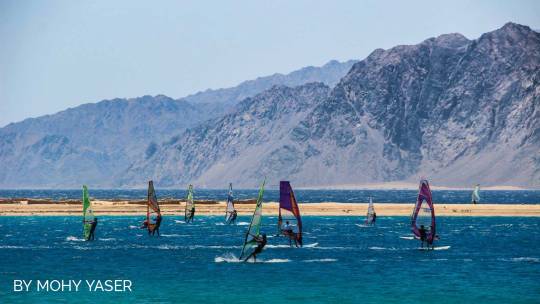
Although, as descendants of one of the world’s oldest civilizations, Egypt has influenced and been influenced by thousands of years of civilization. A large and unfortunate part of this past constituted of many conflicts, ranging from Pharaonic rule and Roman invasions to colonialism and war. This has been reflected in the country’s cultural diversity, with foreign languages such as English, French, German, Italian, and Spanish being widely spoken amongst different circles in society. This applies to just about all other facets of life, where everything from cuisine to art to literature exist as an amalgam of diversity, a residual of foreign lands. This has allowed society to cater to a wide spectrum of individuals regardless of class, from the religious man to the thrill-seeking ‘party animal.” The Egyptian people are continuously evolving, challenged by the opposing forces of tradition and modernization.
Consequently, having survived thousands of years as a key economic and political hub in the region, Egyptians themselves have become a fusion of the human race and view themselves differently as a result. Despite that Egypt’s minorities, consisting of Nubians, Bedouins, Turks, Greeks and several others, constitute less than 5% of Egypt’s population, the other 95% of Egyptians are themselves only 17% Arab, proven through sophisticated DNA analysis. In other words, Egypt is as much a part of the world as the world is of Egypt. Perhaps a subconscious driver behind the astonishingly unique culture Egyptians have constructed over the course of their history, Egyptians do not identify as Arabs, much like their DNA, but as something much more complex. As noted by British officers during the times of colonial rule, the very meaning of being Egyptian is so heavily entrenched within the very cores of the people that even upon being invaded by multiple countries, the Egyptian identity remained impressively intact; an identity that, in a way, lends itself to every corner of the globe.
Culture
Egyptian culture dates back thousands of years to the ancient Pharaohs and has been influenced by numerous invaders throughout history. Without a doubt, this colonialist footprint has blended with the country’s rich tradition to define Egyptian culture as we know it today.

Food-based gatherings are in fact one of the main social pillars of Egyptian culture with roundtable family feasts at its forefront. The local palette is geared heavily towards legumes and rice with onions, garlic and plenty of spices. There’s nothing quite like filling up on the delicious national cuisine, including foul, ta’miyah, and koshari, while basking in the hospitality of the locals, be it in the city or a Bedouin camp in Aswan. Take a stroll on the Corniche in Zamalek and stop by any of the numerous Nile cruise boats. Authentic oriental dishes are served against an unbeatable backdrop of dancing city lights and shimmering water, enriched by a gentle breeze. If you’re able to head north to Alexandria, then seafood is just what the doctor ordered. With the Mediterranean Sea just inches away, salt water fish and crustaceans are a dime a dozen. Select your fish and your favorite cooking style, and enjoy a seat by the window where you can watch small boats sail in and out of the marina while the sun sets in the distance on the Mediterranean.
Egypt is also well known for its captivating entertainment. Belly dancing, or oriental dancing as it’s formally known, is a longstanding part of Egyptian culture permeating all facets of life, from cabarets to the most extravagant weddings. These cultural performances extend to the Sufi whirling dervishes and the famous tanoura. Originally a means to gain higher spiritual awareness, this display of dazzling, brightly colored skirts spinning to the hypnotic pulse of the music is guaranteed to mesmerize. The Egyptian’s love of the performing arts even transcends into the world of live Arabic music concerts in the arching halls of the Cairo Opera House and the Sayed Dervish Theatre in Alexandria, where the beat of the tablah, or drum, reverberates into the depths of your bones.
In keeping with the oriental rhythm, Egyptians speak the official language, Arabic. While modern standard Arabic is used in television, government speeches, and educational institutions, Egyptian ‘colloquial’ Arabic is the common form that is universally understood, especially across the Middle East due to Egypt’s prominence in the film industry. Within Egyptian Arabic, a number of different vernaculars exist, still fairly discernable but with a twist. The Bedouin of Sinai have their own dialect that differs from those of the Western Desert. There are also minor linguistic groups, such as that of the Nubians, who speak Eastern Sudanic languages, and other minorities such as Greek and Armenian which have undoubtedly shrunk over time.
Much like the official language, Egyptians across the country share a very similar trait; their friendliness. Egyptians are a very warm, sociable people who are always ready to strike up a conversation. They will offer you directions or assistance whether or not you asked for it, and will go out of their way to take you where you need to be. If you’re invited over to an Egyptian’s house for anything ranging from snacks to a six-course meal, don’t expect to finish off your plate so easily as your generous hosts can refill faster than you can eat. If you truly want to experience Egypt, then you absolutely must mingle with the locals to learn the meaning of the expression “a home away from home”.
Egypt’s culture has so much to offer both locals and visitors who are looking to experience its charm. Whether you’re interested in its ancient history or simply looking for an adventure, this place, and its people, are sure to captivate your very existence.
Cairo
Despite ranking in the top 30 largest countries with its 1 million square kilometers of land, Egypt is a country that is notorious for its geographic ‘distribution.’ 99% of Egypt’s population utilizes only 5% of the total land area but nearly 100% of its aquatic resources as a result of the predominantly barren ecosystem. The …Read More
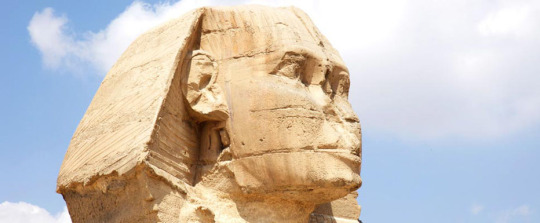
Cairo Sphinx Close Up

Cairo The Sphinx

Cairo Alazhar Mosque
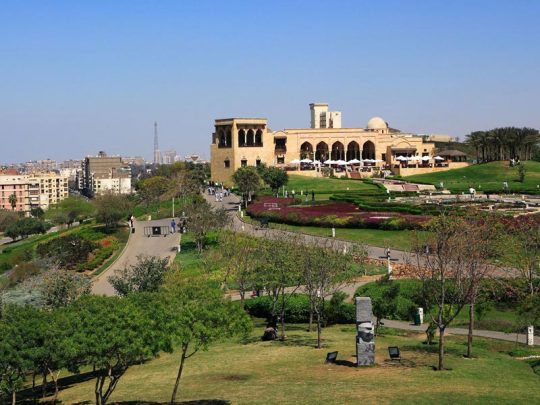
Cairo Alazhar Park

Cairo Gayer Anderson
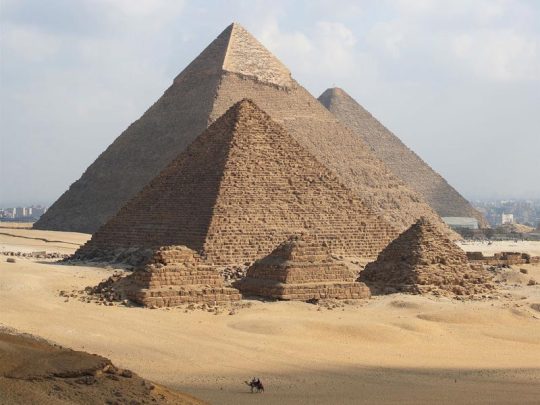
Cairo Giza Pyramids
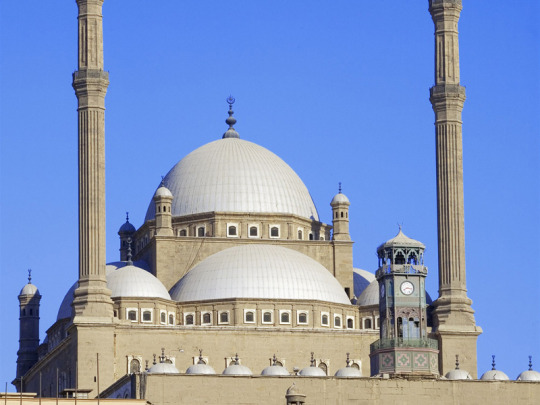
Cairo Mohamed Ali Mosque

Cairo Sultan Hassan Mosque

Cairo Tower
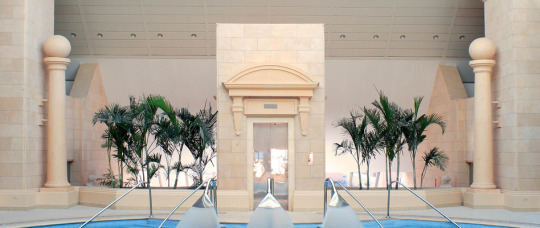
Spa Intercontinental City Stars Cairo

Spa Jw Marriott Cairo
mapboxgl.accessToken = 'pk.eyJ1IjoiYWJvdWVsZWFzaCIsImEiOiJjazZkMnhjZDgxNnV0M2xtZ3o1YTNsMDV3In0.GRJ6v5XGmqI7sHI0W_YIHQ';
var map = new mapboxgl.Map({
container: 'map',
style: 'mapbox://styles/mapbox/streets-v11'
});
Alexandria
The cap the captivating Alexandria will fascinate you with its mix of history and modernity.Read More
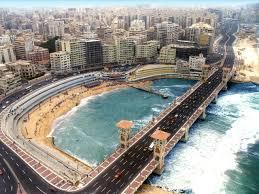
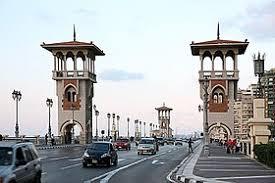


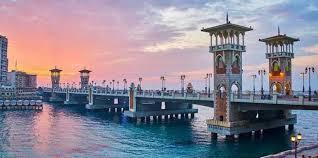
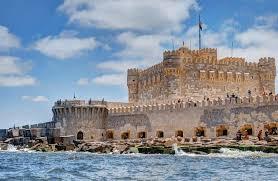
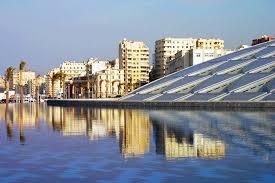
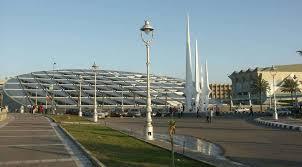
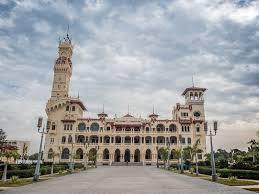

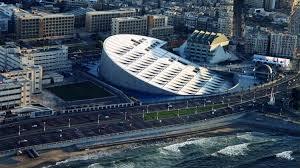
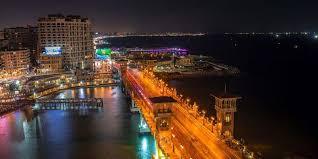
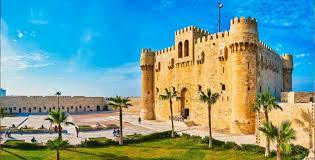
mapboxgl.accessToken = 'pk.eyJ1IjoiYWJvdWVsZWFzaCIsImEiOiJjazZkMnhjZDgxNnV0M2xtZ3o1YTNsMDV3In0.GRJ6v5XGmqI7sHI0W_YIHQ';
var map = new mapboxgl.Map({
container: 'map',
style: 'mapbox://styles/mapbox/streets-v11'
});
Read the full article
0 notes
Text
Arabic - Who Speaks It and Where?
Arabic offers a blend of critical language skills and is useful in over 20 countries with around 300 million native speakers. There's no doubt that those who learn Arabic can live, work, and interact with a more diverse set of countries. As the Arabic saying goes, 'awwal alshshajarat bidharr (“A tree begins with a seed.”)
A trend can be seen in the private and non-profit sectors as businesses seek to better understand developing markets, and organizations work across borders to develop institutions, improve economies, and educate young people in the Middle East and North Africa. Yet the demand for Arabic-speaking professionals in most non-Arab countries exceeds the supply.
Read on to discover the countries where Arabic plays a key role.
Egypt
The official language of the Republic is Modern Standard Arabic. Arabic was adopted by the Egyptians after the Arab invasion of Egypt. The spoken languages are: Egyptian Arabic (68%), Sa'idi Arabic (29%), Eastern Egyptian Bedawi Arabic (1.6%), Sudanese Arabic (0.6%), Domari (0.3%), Nobiin (0.3%), Beja (0.1%), Siwi and others.
In Egypt, the colloquial expression for "How are you?" is "izzayyak".
Morocco
Morocco's official languages are Arabic and Berber. The country's distinctive group of Moroccan Arabic dialects is referred to as Darija. Approximately 89.8% of the whole population can communicate to some degree in Moroccan Arabic, or Maghrebi Arabic. The Berber language is spoken in three dialects (Tarifit, Tashelhit and Central Atlas Tamazight). In 2008, Frédéric Deroche estimated that there were 12 million Berber speakers, making up about 40% of the population. The 2004 population census reported that 28.1% of the population spoke Berber.
In Morocco, the colloquial expression for "How are you?" is '"la bas?"
Algeria
Berber and Modern Standard Arabic are the official languages. Algerian Arabic is the language used and understood by the majority of the population, and is also called locally ‘Arbiya or Dziriya. Algerian Arabic is part of the Maghrebi Arabic dialect, which fades into Moroccan Arabic and Tunisian Arabic along the respective borders.
Colloquial Algerian Arabic is heavily infused with borrowings from French and Berber. Algeria emerged as a bilingual state after 1962. Colloquial Algerian Arabic is spoken by about 72% of the population and Berber by 27–30%.
In Algeria, the colloquial expression for "How are you?" is "wac rak?"
Sudan
Approximately 70 languages are native to Sudan. Sudanese Arabic is the most widely spoken language in the country, an Afroasiatic language of the Semitic. The dialect has borrowed much vocabulary from local Nilo-Saharan languages (Nobiin, Fur, Zaghawa, Mabang). This has resulted in a variety of Arabic that is unique to Sudan, reflecting the way in which the country has been influenced by Nilotic, Arab, and western cultures. Few nomads in Sudan still have similar accents to the ones in Saudi Arabia.
In Sudan, the colloquial expression for "How are you?" is "Inta kwayes?" for a male and "Inta kwayes?" for a female.
Iraq
Arabic is the majority language; Kurdish is spoken by approximately 10–15% of the population; and Turkmen/Turkoman, the Neo-Aramaic language of the Assyrians and others, by 5%. Arabic, Kurdish, Persian, and Turkmen/Turkoman are written with versions of the Arabic script, the Neo-Aramaic languages in the Syriac script and Armenian is written in the Armenian script. Prior to the invasion in 2003, Arabic was the sole official language. Since the new Constitution of Iraq approved in June 2004, both Arabic and Kurdish are official languages.
In Iraq, the colloquial expression for "How are you?" is "Shlonak?" for a male and "Schlonech?" for a female.
Saudi Arabia
The official language of Saudi Arabia is Arabic. The three main regional variants spoken by Saudis are Hejazi Arabic (about 6 million speakers), Najdi Arabic (about 8 million speakers) and Gulf Arabic (about 0.2 million speakers). Saudi Sign Language is the principal language of the deaf community. The large expatriate communities also speak their own languages, the most numerous of which are Tagalog (700,000), Rohingya (400,000), Urdu (380,000), and Egyptian Arabic (300,000).
In Saudi, the colloquial expression for "How are you?" is "Keef halak?" for a male and "Keef halik?" for a female.
United Arab Emirates
The UAE is a Constitutional Federation of seven emirates: Abu Dhabi, Dubai, Sharjah, Ajman, Umm Al Quwain, Ras Al Khaimah and Fujairah, and Arabic (Emirati Arabic) is its the official and historical language. This is the language of the Emirati, with English as a second language. For example, most signs are in both Arabic and English e.g. road signs. The United Arab Emirates has a very diverse population, of which 10% are UAE nationals and the remainder is made up of expatriates.
In the UAE, the colloquial expression for "How are you?" is"shakhbaarak" for a male and "shakhbaarik" for a female.
Ready to learn Arabic? So, yallah, let's go.
0 notes
Link
#armenian sudanis#armenian sudanese population#armenia#sudan#africa#north africa#east africa#middle east#rushaa hamid#500 words magazine#sudanese history
15 notes
·
View notes
Text
Visit Egypt

https://youtu.be/jCdoHRR4JB8
Egyptian Tourism Authority
About Egypt
Country
Despite ranking in the top 30 largest countries with its 1 million square kilometers of land, Egypt is a country that is notorious for its geographic ‘distribution.’ 99% of Egypt’s population utilizes only 5% of the total land area but nearly 100% of its aquatic resources as a result of the predominantly barren ecosystem. The lifeline of some 90 million human beings, the river Nile is the focal point of urban planning, an incredible 6,695 km gift of sustenance for Egypt and three other countries, making it the longest, and arguably most vital, river in the world.
The Nile enters Egypt a few kilometers north of a Sudanese town called Wadi Halfa through a narrow canyon that traverses sandstone and granite cliffs. The northward flowing direction of the river has thus earned Egypt’s southern border the name “Upper Egypt.” Within this stretch of the Nile is the world’s most intensive concentration of temples, tombs and palaces constructed over the span of 4,000 years. This includes the temples of Abydos, Dendara, Karnak, Esna, Edfu, Kom Ombo, Philae and Abu Simbel, each conceived for their respective deities, further to the tombs in the Theban Necropolis within the Valley of the Kings across the river from Luxor. Absorbing the river-scape from the comfort of a felucca (small sail boat) is the epitome of pleasure, relished by locals and non-locals alike. This is easily arranged in Aswan, and larger Nile cruise boats can provide an even more luxurious experience. As this river continues to flow upwards past major cities and temples, it begins to branch out into a flower-shaped formation known as the Nile delta, covering 240 km of the Mediterranean coastline. Home to 39 million people, this is Egypt’s most agriculturally rich land with some of the most beautiful, soul-rejuvenating nature Egypt has to offer.
Much like the Nile, the Red Sea coast, a once microcosm of the world that hosted sailors from far away lands, has also become a pivotal part of the country. Turquoise waves break against rocky capes and windswept beaches in the foreground of an endless mountain range, a much needed escape for the people of Cairo. The real lure here, especially for the non-locals, are the fabulous island reefs near the resort of Hurghada and the smaller settlements of Port Safaga, El-Quseir and Marsa Alam to the south. This entire region saw a rapid transformation in the past two decades, catalyzed by surges of annual tourists, with the most notable development being the future construction of Egypt’s new capital city near this coastline. These destinations pack a powerful punch when it comes to travel-seeking vacationers. Shark-diving, snorkeling, and kite-surfing are complemented by the revitalizing effects of 18-hole golf courses, private beaches, open-air cinemas, and unrivaled night life scenes.
A tribute to its elusive splendor, the Egyptian landscape is quite remarkable, especially considering it’s a country composed mostly of sand and dust .
People
A democratic republic of blended ethnicities, Egypt is divided into 26 governorates consisting of towns, cities and villages. Currently, Egypt is home to some 90 million Egyptians that are (almost) equally split between urban and rural-dwelling citizens, concentrated near the banks of the Nile in the major cities of Cairo, Luxor, Aswan and Port Said. A very provincial people, Egyptians have always had deep-rooted ties to their places of origin, so much so that even those who live abroad always return to the exact same town they had previously built a life in. It’s almost as if moving elsewhere is not an option. From this emerges the unparalleled warmth and intangible ‘closeness’ that exists between the people of this country, even in times of distress. A truly, unforgettably welcoming people.

Although, as descendants of one of the world’s oldest civilizations, Egypt has influenced and been influenced by thousands of years of civilization. A large and unfortunate part of this past constituted of many conflicts, ranging from Pharaonic rule and Roman invasions to colonialism and war. This has been reflected in the country’s cultural diversity, with foreign languages such as English, French, German, Italian, and Spanish being widely spoken amongst different circles in society. This applies to just about all other facets of life, where everything from cuisine to art to literature exist as an amalgam of diversity, a residual of foreign lands. This has allowed society to cater to a wide spectrum of individuals regardless of class, from the religious man to the thrill-seeking ‘party animal.” The Egyptian people are continuously evolving, challenged by the opposing forces of tradition and modernization.
Consequently, having survived thousands of years as a key economic and political hub in the region, Egyptians themselves have become a fusion of the human race and view themselves differently as a result. Despite that Egypt’s minorities, consisting of Nubians, Bedouins, Turks, Greeks and several others, constitute less than 5% of Egypt’s population, the other 95% of Egyptians are themselves only 17% Arab, proven through sophisticated DNA analysis. In other words, Egypt is as much a part of the world as the world is of Egypt. Perhaps a subconscious driver behind the astonishingly unique culture Egyptians have constructed over the course of their history, Egyptians do not identify as Arabs, much like their DNA, but as something much more complex. As noted by British officers during the times of colonial rule, the very meaning of being Egyptian is so heavily entrenched within the very cores of the people that even upon being invaded by multiple countries, the Egyptian identity remained impressively intact; an identity that, in a way, lends itself to every corner of the globe.
Culture
Egyptian culture dates back thousands of years to the ancient Pharaohs and has been influenced by numerous invaders throughout history. Without a doubt, this colonialist footprint has blended with the country’s rich tradition to define Egyptian culture as we know it today.
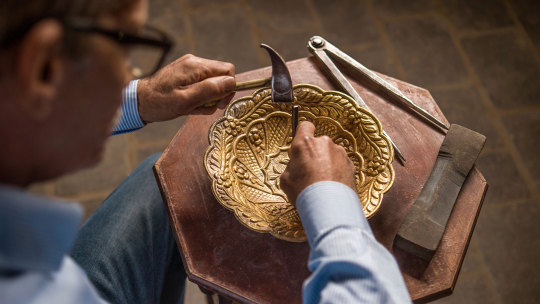
Food-based gatherings are in fact one of the main social pillars of Egyptian culture with roundtable family feasts at its forefront. The local palette is geared heavily towards legumes and rice with onions, garlic and plenty of spices. There’s nothing quite like filling up on the delicious national cuisine, including foul, ta’miyah, and koshari, while basking in the hospitality of the locals, be it in the city or a Bedouin camp in Aswan. Take a stroll on the Corniche in Zamalek and stop by any of the numerous Nile cruise boats. Authentic oriental dishes are served against an unbeatable backdrop of dancing city lights and shimmering water, enriched by a gentle breeze. If you’re able to head north to Alexandria, then seafood is just what the doctor ordered. With the Mediterranean Sea just inches away, salt water fish and crustaceans are a dime a dozen. Select your fish and your favorite cooking style, and enjoy a seat by the window where you can watch small boats sail in and out of the marina while the sun sets in the distance on the Mediterranean.
Egypt is also well known for its captivating entertainment. Belly dancing, or oriental dancing as it’s formally known, is a longstanding part of Egyptian culture permeating all facets of life, from cabarets to the most extravagant weddings. These cultural performances extend to the Sufi whirling dervishes and the famous tanoura. Originally a means to gain higher spiritual awareness, this display of dazzling, brightly colored skirts spinning to the hypnotic pulse of the music is guaranteed to mesmerize. The Egyptian’s love of the performing arts even transcends into the world of live Arabic music concerts in the arching halls of the Cairo Opera House and the Sayed Dervish Theatre in Alexandria, where the beat of the tablah, or drum, reverberates into the depths of your bones.
In keeping with the oriental rhythm, Egyptians speak the official language, Arabic. While modern standard Arabic is used in television, government speeches, and educational institutions, Egyptian ‘colloquial’ Arabic is the common form that is universally understood, especially across the Middle East due to Egypt’s prominence in the film industry. Within Egyptian Arabic, a number of different vernaculars exist, still fairly discernable but with a twist. The Bedouin of Sinai have their own dialect that differs from those of the Western Desert. There are also minor linguistic groups, such as that of the Nubians, who speak Eastern Sudanic languages, and other minorities such as Greek and Armenian which have undoubtedly shrunk over time.
Much like the official language, Egyptians across the country share a very similar trait; their friendliness. Egyptians are a very warm, sociable people who are always ready to strike up a conversation. They will offer you directions or assistance whether or not you asked for it, and will go out of their way to take you where you need to be. If you’re invited over to an Egyptian’s house for anything ranging from snacks to a six-course meal, don’t expect to finish off your plate so easily as your generous hosts can refill faster than you can eat. If you truly want to experience Egypt, then you absolutely must mingle with the locals to learn the meaning of the expression “a home away from home”.
Egypt’s culture has so much to offer both locals and visitors who are looking to experience its charm. Whether you’re interested in its ancient history or simply looking for an adventure, this place, and its people, are sure to captivate your very existence.
Cairo
Despite ranking in the top 30 largest countries with its 1 million square kilometers of land, Egypt is a country that is notorious for its geographic ‘distribution.’ 99% of Egypt’s population utilizes only 5% of the total land area but nearly 100% of its aquatic resources as a result of the predominantly barren ecosystem. The …Read More

Cairo Sphinx Close Up
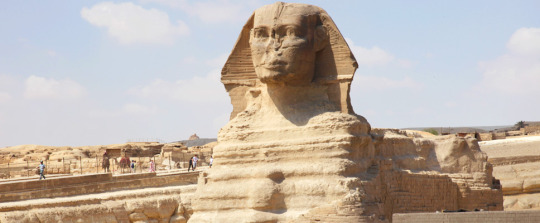
Cairo The Sphinx
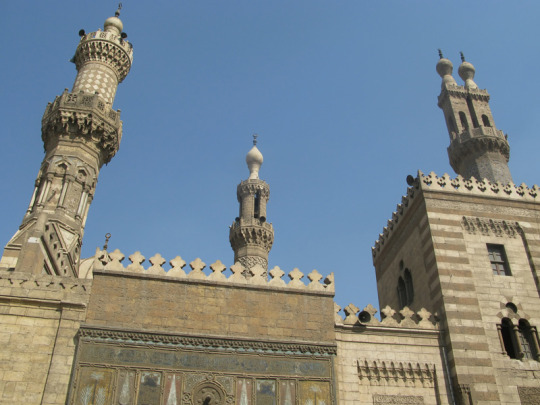
Cairo Alazhar Mosque
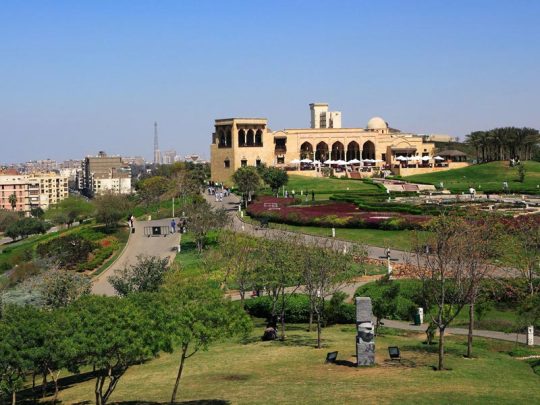
Cairo Alazhar Park

Cairo Gayer Anderson

Cairo Giza Pyramids

Cairo Mohamed Ali Mosque

Cairo Sultan Hassan Mosque

Cairo Tower
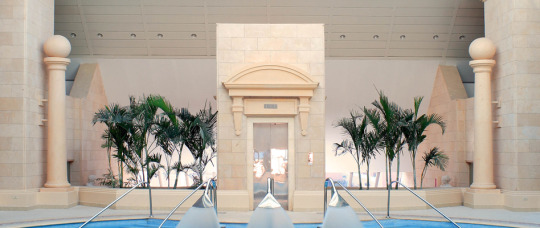
Spa Intercontinental City Stars Cairo

Spa Jw Marriott Cairo
mapboxgl.accessToken = 'pk.eyJ1IjoiYWJvdWVsZWFzaCIsImEiOiJjazZkMnhjZDgxNnV0M2xtZ3o1YTNsMDV3In0.GRJ6v5XGmqI7sHI0W_YIHQ';
var map = new mapboxgl.Map({
container: 'map',
style: 'mapbox://styles/mapbox/streets-v11'
});
Alexandria
The cap the captivating Alexandria will fascinate you with its mix of history and modernity.Read More



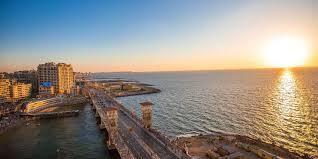


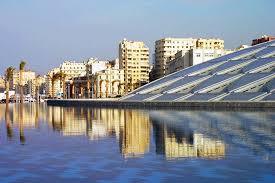
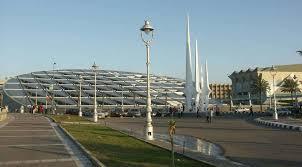
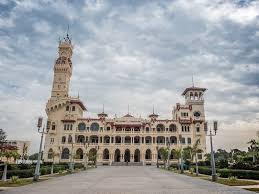
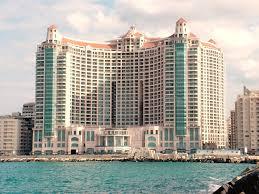



mapboxgl.accessToken = 'pk.eyJ1IjoiYWJvdWVsZWFzaCIsImEiOiJjazZkMnhjZDgxNnV0M2xtZ3o1YTNsMDV3In0.GRJ6v5XGmqI7sHI0W_YIHQ';
var map = new mapboxgl.Map({
container: 'map',
style: 'mapbox://styles/mapbox/streets-v11'
});
Read the full article
0 notes